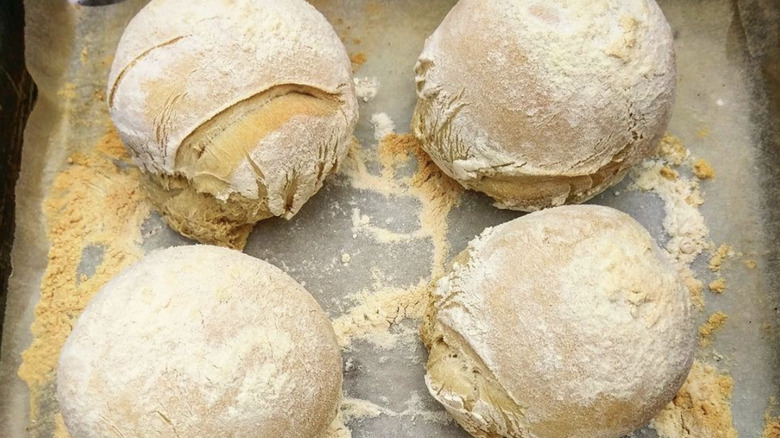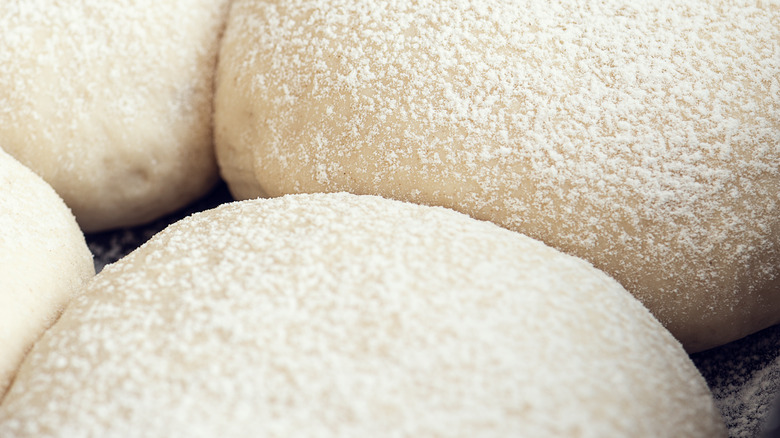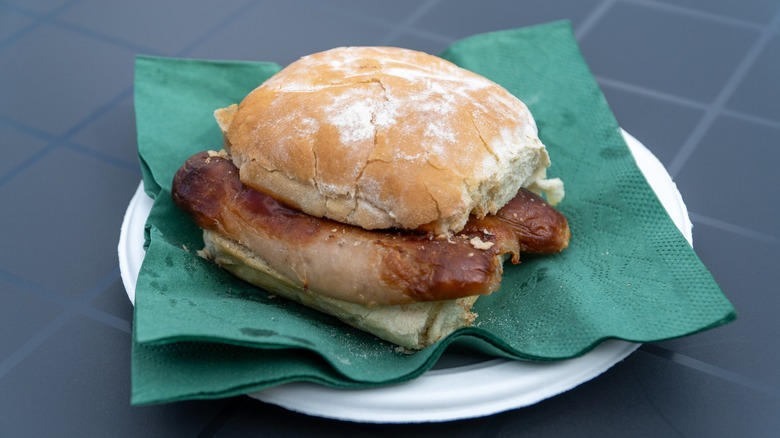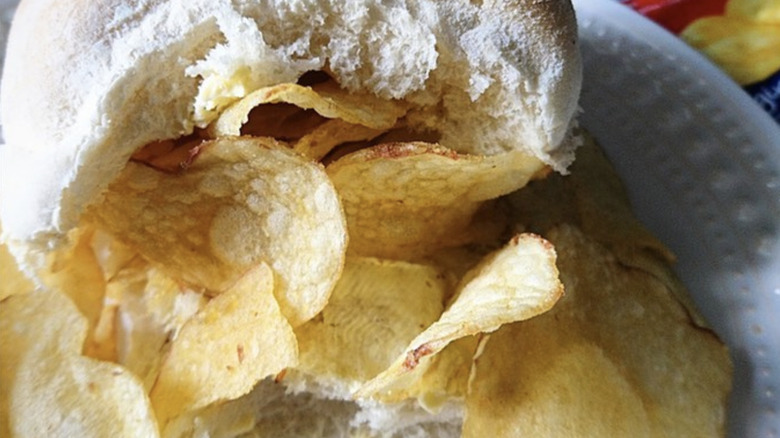The History Of Waterford, Ireland's Famous Blaa Bread
Blaa may sound humorous, but these bread rolls are serious business in Ireland. In the late 17th century, Huguenots began baking the doughy rolls in Waterford, an area known for trade and goods exchange. The round rolls were said to be made from scraps of leftover bread dough and helped keep the bellies of hungry families full.
Blaa bread became associated with the working class, and by the early 1800s, close to 20,000 of these rolls were baked each day. Since then, the popularity of these doughy delights has persisted, with Waterford residents continuing to flock to bakeries each morning to get their hands on the freshly baked delights. In 2013, blaa received the rare and noteworthy Protect Geographical Indication, a special European designation recognizing the expertise of Blaa bakers, the area in which these rolls are made, and the traditional recipes that continue to serve history with each chewy bite.
The history of the blaa
Bakers who pull blaa rolls out of their ovens daily surmise that the name of these rolls originated either from the Huguenot "blaad" or the French "blanc," terms that reference flour and white, respectively. Both descriptions are accurate, as blaa rolls are indeed white and coated with ample dustings of flour.
When blaa was first baked in 17th-century Ireland, wheat wasn't easy to come by. Ireland's finicky weather didn't lend itself to producing the cereal crop, so bread recipes instead used oats and other grains to put hearty slices on tables. White bread was seen as a luxury, expensive, and rare to acquire, so when the Huguenots — French Protestant refugees who fled to Ireland to escape Catholic rule — arrived, they brought their bread-making traditions. Their white bread, which they called "pain blanc" in French, proved to be a challenging pronunciation for locals who simply called the doughy orbs "blaa."
The bread's heyday lasted into the 1960s, with over a dozen bakeries cranking out rolls to feed Waterford residents. A few of these establishments remain in operation today. At the bakery, Hickey's, a dedicated group of customers, has kept the original shop in business, and bakers continue to use minimal equipment to knead the dough and form doughy balls to rise and bake.
Making blaa
Not to be confused with the British bap, another round bread roll, blaa, is much more doughy and soft. The simple recipe calls only for flour, yeast, salt, and water, but the resulting bread is spongy, fluffy, and light.
Blaa recipes require generous flour, and bakers use well-floured workspaces to handle the dough in between rises. Throughout the rising steps, buns are coated with sprinklings of flour, and before the dough is placed into the oven, another coating is dusted on top of the rolls. This flour helps give blaa its signature texture and protects the dough while it bakes. Though bakers need patience to make this bread — over four hours of total rising time is required — precision isn't in order. Buns can come in various shapes and sizes and aren't always perfectly-shaped spheres.
Brian Hickey of Hickey's Bakery told NPR that blaa bakers have their subtle takes on the recipe, with each bakery known for particular, subtle differences in taste, texture, and process. At Barron's Bakery, for instance, original Scotch Brick ovens are still used to make blaa. Hickey's Bakery doesn't add any preservatives to its recipe, so the rolls are best enjoyed fresh.
How blaa rolls are enjoyed
Since blaa tastes best fresh out of the oven, bakeries are inundated in the early morning hours as buyers rush to buy rolls before the dough loses its flavor. Chef Martin Dwyer told NPR that even a few hours of delay could be tasted when it comes to enjoying fresh blaa, and enthusiasts have voiced their preferences for texture and finish.
From soft and floury to browned and crispy, blaa bakers have heard all kinds of requests. Some blaa purists insist the roll is meant to be enjoyed with only a thick swab of Irish butter, while others have found comfort food made out of blaa stuffed with onion and cheese-flavored potato chips. The dough's simple recipe can lend to various toppings, and restaurants have filled the baked rolls with an assortment of meats and eggs to make breakfast sandwiches that can be enjoyed throughout the early afternoon.
Regardless of how you eat your blaa, Waterford residents are so closely linked with the roll that the people have become known as "The Blaas." Proceed with caution if you're going to start announcing your favorite blaa rolls and accouterments — it might be a contentious subject to chew on.



